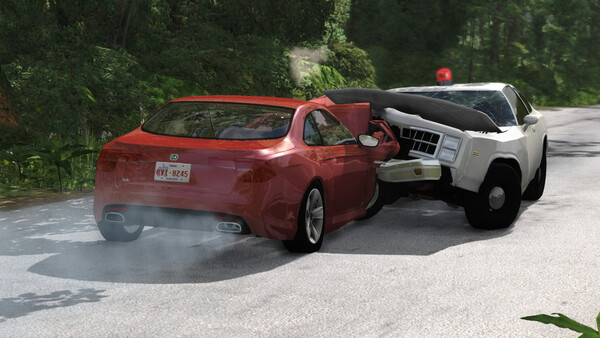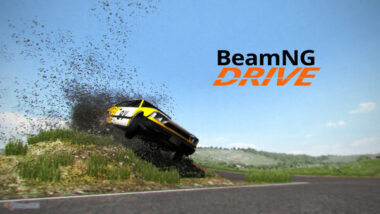BeamNG.drive is a highly realistic driving simulator known for its soft-body physics engine, which enables players to experience detailed car deformations and lifelike crashes. With an open-world sandbox and a multitude of driving scenarios, mastering this game involves more than just driving from point A to point B. This article will serve as a comprehensive guide, offering tips and tricks to improve your experience in BeamNG.drive, whether you’re new to the game or looking to enhance your skills.
Introduction
BeamNG.drive provides an immersive, physics-based driving experience that requires a thorough understanding of vehicle handling, crash dynamics, and game mechanics. This guide will cover the essential tips to get you started, explain advanced techniques, and provide insights into mastering the game. With these tips, you’ll gain a deeper appreciation for the game’s realism and improve your performance in various scenarios.
1. Getting Started: Installing and Configuring BeamNG.drive
Before diving into the gameplay, proper installation and configuration are crucial for a smooth experience. This section will guide you through setting up BeamNG.drive.
H3: System Requirements and Installation
To enjoy BeamNG.drive without any performance issues, ensure that your PC meets the minimum requirements:
- Processor: Quad-core CPU
- RAM: 8 GB
- GPU: DirectX 11 compatible with at least 2 GB VRAM
Once you’ve verified your system specifications, install the game via Steam. After installation, it’s time to configure the settings for optimal performance.
H4: Configuring Graphics and Controls
Adjust your graphics settings to suit your system. If you have a powerful PC, set everything to high, but for mid-range PCs, it’s better to lower settings like shadows and reflections to avoid lag. Also, customize your controls—whether you’re using a keyboard, gamepad, or steering wheel.
2. Learning Basic Vehicle Controls
In BeamNG.drive, mastering the vehicle controls is essential. Unlike arcade games, the controls are sensitive and react realistically to your input.
H3: Mastering Acceleration and Braking
You can control the vehicle using either WASD keys or a game controller. Start with small adjustments on acceleration (W) to prevent oversteering or crashing. When braking, tap S gently instead of slamming the brakes, as sudden stops can lead to vehicle skidding or loss of control.
H4: Using Camera Angles for Better Control
The camera angles play a significant role in understanding the terrain and planning your maneuvers. Use the C key to cycle through different views like first-person, third-person, or chase cam. For precision driving, the first-person view gives the most immersive experience.
3. Exploring Free Roam Mode
The Free Roam mode in BeamNG.drive is where you can test your driving skills without any specific objectives. It’s a great sandbox to explore the game’s physics and maps.
H3: Choosing the Right Vehicle
BeamNG.drive offers a wide range of vehicles, from sedans to heavy trucks and off-road vehicles. Choose your vehicle based on the terrain:
- Sports Cars: For testing speed and handling on paved roads.
- Off-road Vehicles: For tackling rough terrains like the Utah map.
H4: Experimenting with Terrain and Environment
In Free Roam, you can switch between different maps and environments. Explore different terrains like gravel, mud, and sand to understand how the vehicle reacts differently. Make sure to save your vehicle positions if you’re testing something specific, so you can restart from the same point.
4. Understanding the Physics: Soft-Body Dynamics
The soft-body physics engine is the heart of BeamNG.drive. It’s what makes the game stand out from other simulators. To master the game, you need to understand how physics affects vehicle movement and damage.
H3: How Soft-Body Physics Work
BeamNG.drive simulates each part of the vehicle as a separate entity, which means that crashes and damage are calculated based on the speed, angle, and object of impact. This leads to realistic deformations like crumpled fenders and bent chassis.
H4: How Crashes Affect Driving
After a crash, the vehicle’s performance changes. For example, a frontal collision may damage the engine, slowing the vehicle down, while rear-end impacts may affect suspension and steering, making the car harder to control. Knowing how to drive a damaged car is crucial to mastering the game.
5. Customizing and Modding Your Experience
One of the best features of BeamNG.drive is its modding community. You can download mods to expand your vehicle selection, enhance graphics, and even create new maps.
H3: How to Install Mods
BeamNG.drive has an integrated Mods section in the main menu. You can easily browse, download, and activate mods directly from the game. Download popular vehicle mods like the Gavril D-Series for more realistic truck simulation, or install new environments like Tropical Island to test off-road capabilities.
H4: Best Mods for Beginners
Here are some recommended mods for a better experience:
- Realistic Crash Mod: Enhances the physics engine to make crashes even more lifelike.
- Graphics Enhancer: Upgrades the game’s lighting and textures for a more immersive experience.
6. Mastering Scenarios: From Racing to Off-road Challenges
BeamNG.drive offers a wide array of scenarios that challenge your driving skills in different environments. These pre-built missions help you become a more proficient driver.
H3: Starting with Simple Scenarios
Begin with the easier scenarios like drag racing or timed trials to get accustomed to the game mechanics. Scenarios like Delivery Truck Driving can help you master handling heavier vehicles.
H4: Advanced Challenges
Once you’re comfortable with the basics, try more advanced scenarios like off-road time trials. These scenarios test your vehicle’s suspension, steering control, and your ability to adapt to various terrains.
7. Crash Testing: Maximizing the Physics Engine
One of the most fun aspects of BeamNG.drive is the ability to conduct your own crash tests. Whether you’re crashing at high speeds or testing slow-motion impacts, the game’s physics engine makes it extremely satisfying.
H3: High-Speed Crashes
Use Free Roam mode to find a straight road, then accelerate to top speed before crashing into an object like a wall or another vehicle. Watch how the vehicle deforms in real time and in slow motion (Alt + Down Arrow).
H4: Testing Different Types of Crashes
Try simulating different types of crashes like:
- T-Bone Collisions: Test side impact crashes.
- Rollovers: Create crashes that flip the car multiple times.
- Head-on Collisions: Smash two vehicles together and analyze the damage.
8. Using AI Traffic to Create Realistic Driving Environments
The AI traffic feature in BeamNG.drive allows you to add computer-controlled vehicles to your environment. This adds another layer of realism, making the world feel more populated.
H3: Setting Up AI Traffic
In Free Roam, press F10 to open the AI Traffic settings. You can spawn multiple AI vehicles and adjust their behavior—whether they drive aggressively, follow traffic rules, or randomly roam the map.
H4: AI Traffic for Crash Simulations
Set up crash tests with AI traffic. For example, create a scenario where an AI car suddenly brakes in front of you, forcing you into a high-speed collision. You can even observe how AI vehicles react to accidents and adjust their driving accordingly.
9. Exploring the Best Maps in BeamNG.drive
BeamNG.drive offers a variety of maps, each with unique terrain and challenges. Whether you want to drive through urban environments or explore off-road tracks, the game’s maps cater to all types of drivers.
H3: Best Maps for Beginners
- East Coast, USA: A combination of highways, rural roads, and small towns—great for learning the basics of vehicle handling.
- Gridmap: A test environment perfect for trying out different crash scenarios and testing vehicle durability.
H4: Advanced Maps for Experienced Players
- Utah: Ideal for off-road driving and high-speed runs through winding canyons.
- Italy: Offers a mix of coastal roads, urban streets, and mountainous regions, perfect for varied driving experiences.
10. Recording and Sharing Your Gameplay
Once you’ve mastered the game’s various aspects, you may want to record and share your gameplay with others. BeamNG.drive includes tools for capturing and replaying your best moments.
H3: Recording with the Replay Feature
Press F11 to activate the Replay Editor, which allows you to capture your crashes, driving sequences, and AI interactions. You can even use slow-motion to create cinematic crash scenes.
H4: Sharing Your Footage
After recording, you can export your footage and share it with the BeamNG.drive community or upload it to social media platforms. Many players enjoy creating compilations of their most spectacular crashes or custom scenarios.
Conclusion
BeamNG.drive is more than just a driving simulator—it’s an open-world sandbox that allows you to test the limits of your driving skills and vehicle handling under extreme physics. By mastering the basics, exploring scenarios, experimenting with crash testing, and using AI traffic, you can fully appreciate the depth and realism of the game. With these tips and guides, you’ll improve your gameplay and make the most out of BeamNG.drive’s unique physics engine and driving experience.


